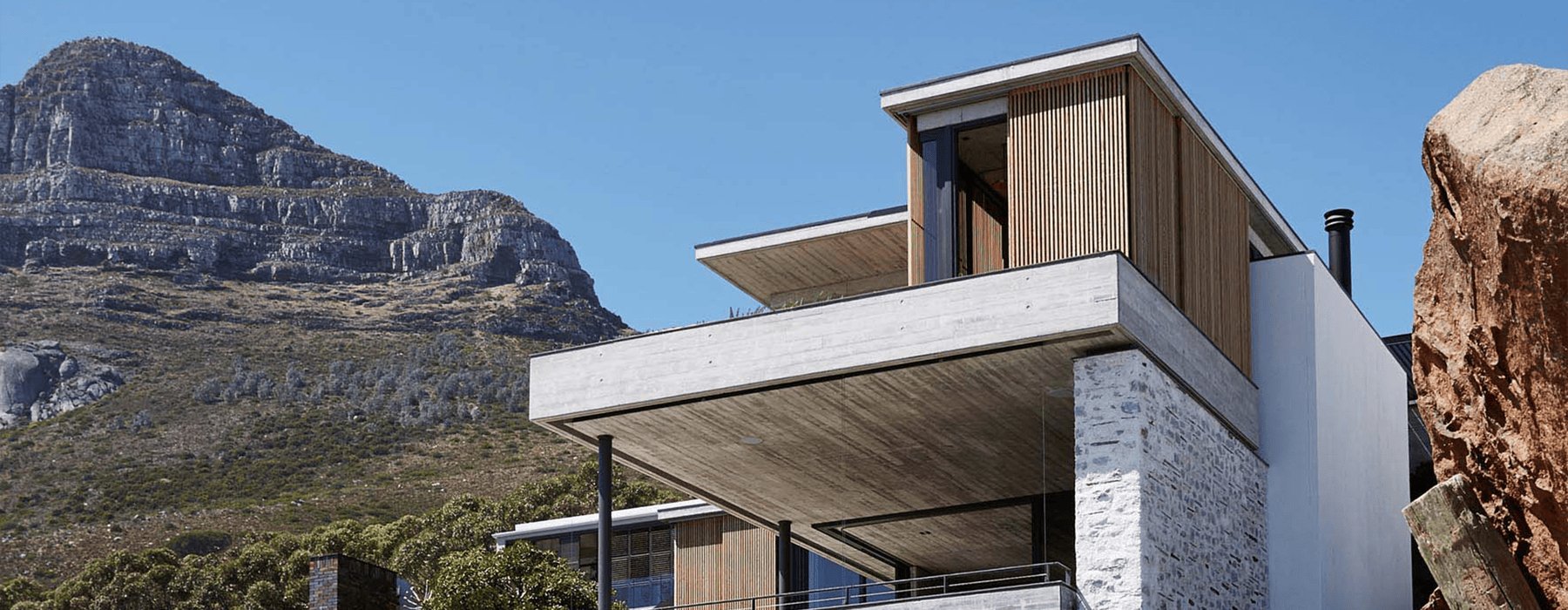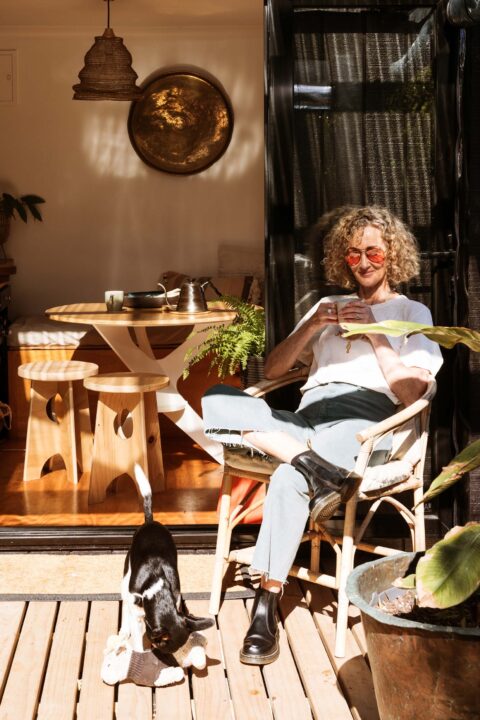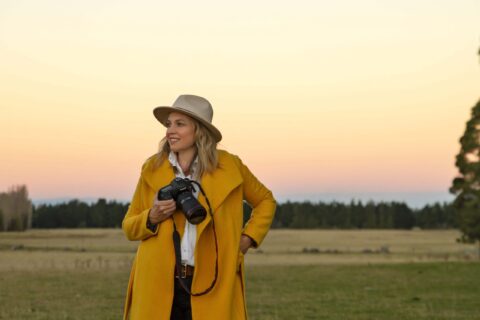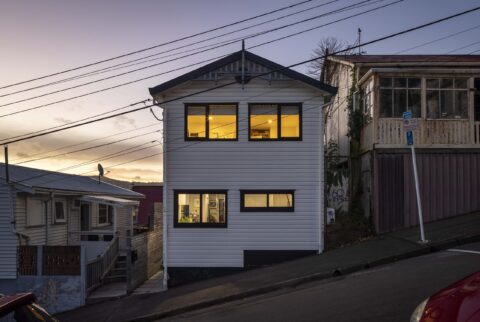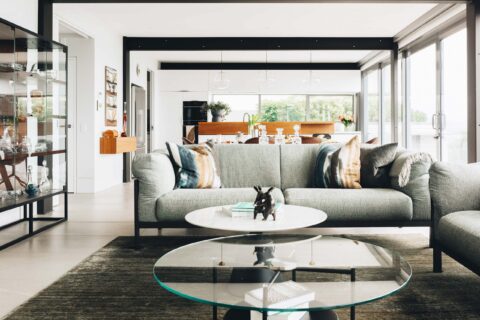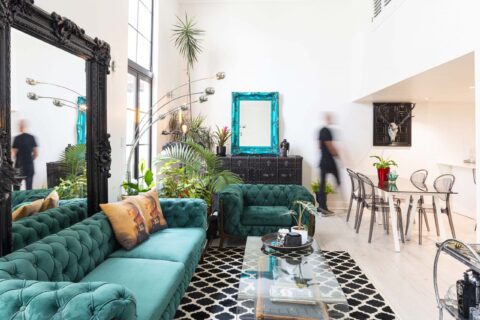A new house on Cape Town’s Atlantic Seaboard challenges the conventional approach typical of most of its neighbours, at once aiming to be more deferential to the natural beauty of its setting, and friendlier to people on the street.
When you walk along Kloof Road in Clifton along Cape Town’s Atlantic Seaboard, there’s one house where the joggers, dog walkers, strollers and others slow, stop and gather for a chat, or pause to look more than the others. “Clifton doesn’t have the typical suburban setup where people just drive. There’s a lot of foot traffic and people use the sidewalks,” says architect Jan-Heyn Vorster of his neighbourhood.
Jan-Heyn and his partner Pieter Bruwer built the house specifically with the hope that it would be friendlier to the street than the blank, overpowering mansions typical of the Atlantic Seaboard. These houses tend to follow a fairly predictable formula: get up as high as you can and face the sea view, and build as big as you can according to real-estate logic.
“They are built from left to right, the full width of the site to maximise the views,” says Jan-Heyn. But all the beauty of those ocean views, Jan-Heyn points out that the houses all face west, so they tend to be uncomfortably exposed to harsh afternoon sun.
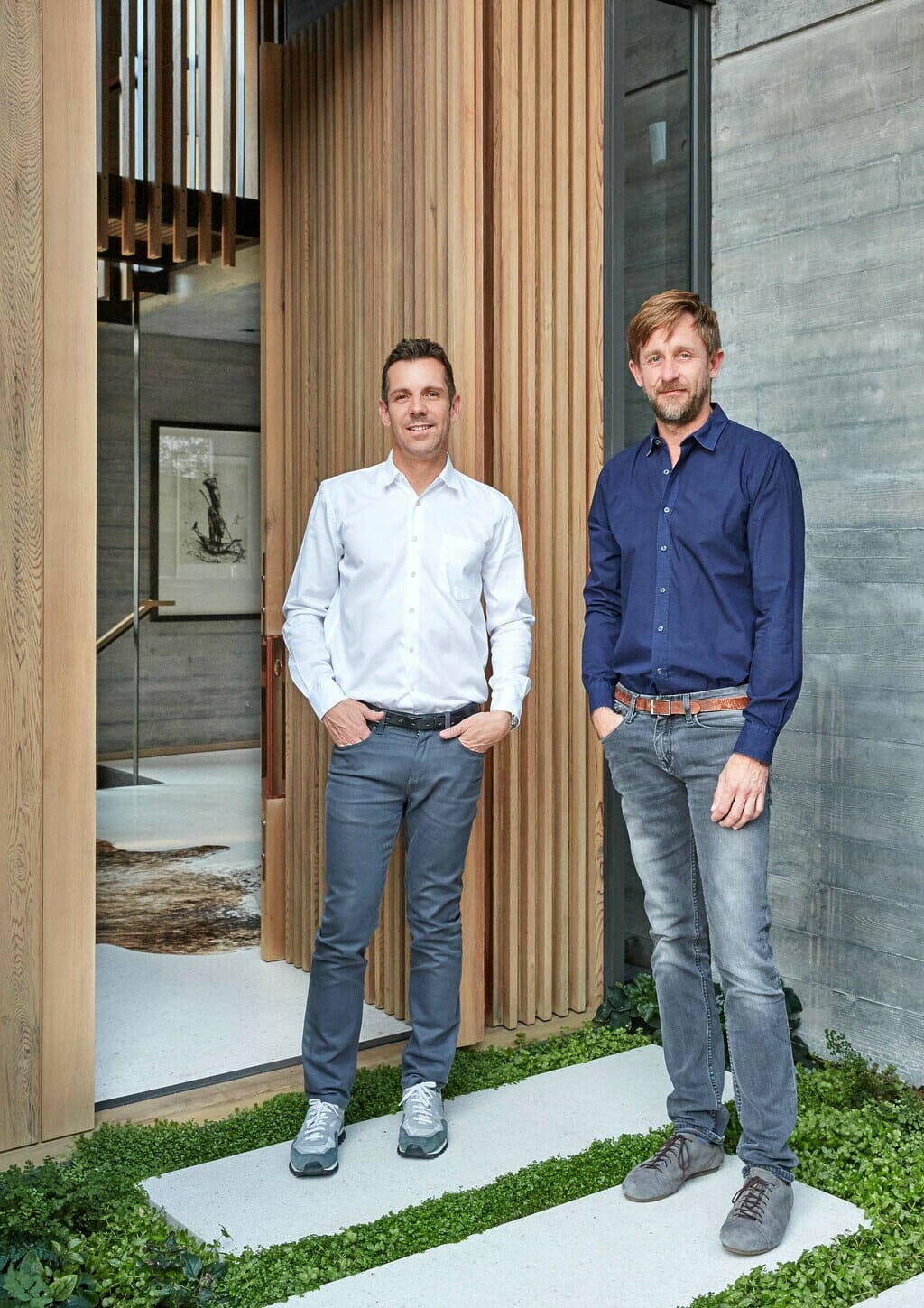
Jan-Heyn and Pieter had been living in an old Clifton house, built in the 1940s, for two years before they decided to rebuild. While the old house “didn’t respond very well to the site” (and left them with a long, steep climb up the stairs carrying groceries from the garage, which was especially uncomfortable when it was raining), they nonetheless learnt some important lessons while living there.
“It told us few things about wind, wind direction, the views, the sun and how to design around these climatic challenges,” says Jan-Heyn.
As Jan-Heyn and his business partner in their architecture firm, Pieter Malan, began designing the house, they found that their first key decisions were driven by those lessons about the weather. “We started looking at the placement of the building on the site,” says Jan-Heyn. He and Pieter came up with the idea of an arrangement, a little like a courtyard building, which created a sheltered outdoor space facing north, turning its back on the southeaster.
They had to dig into the mountainside so that they could create a basement garage. On top of that, they placed a guest suite, almost a separate flatlet that links internally with the house. The same level houses the laundry, plant area, pump room and the rest of it. There’s also a wine cellar, and, because it’s a smart house (with hidden blinds that drop down automatically when the harsh sun starts beating down) the IT/AV room and solar energy plant room are hidden down on this level, too.
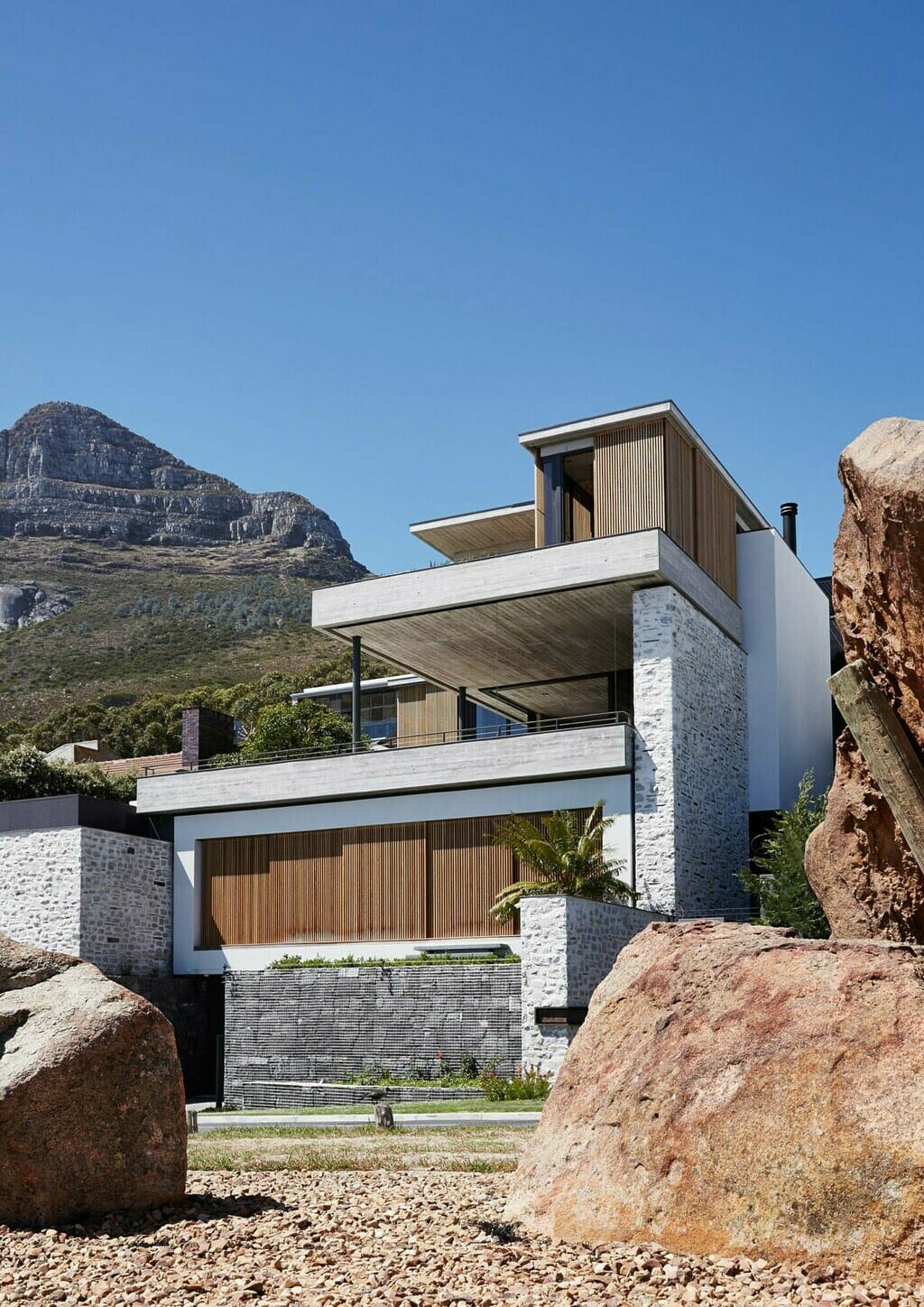
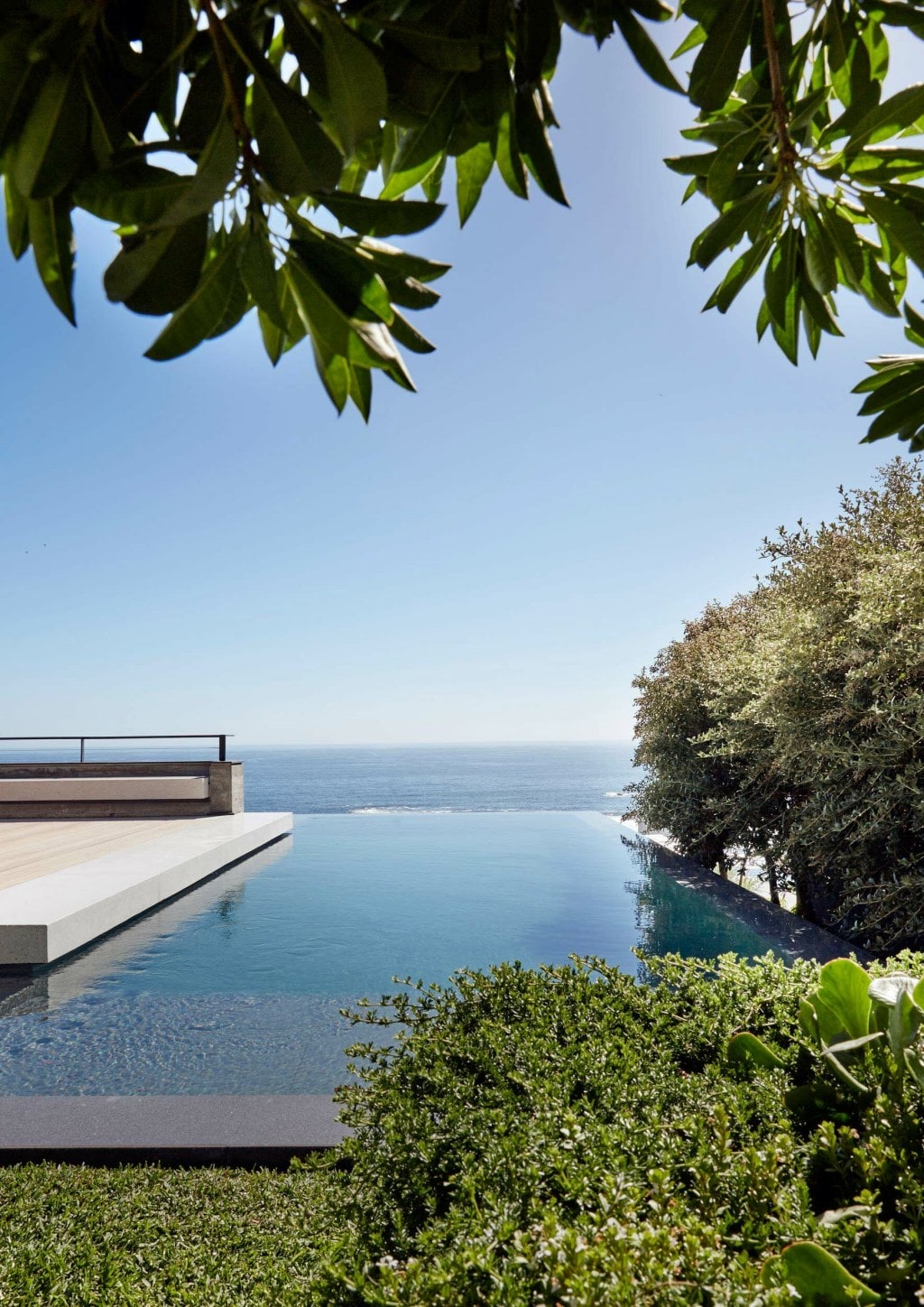
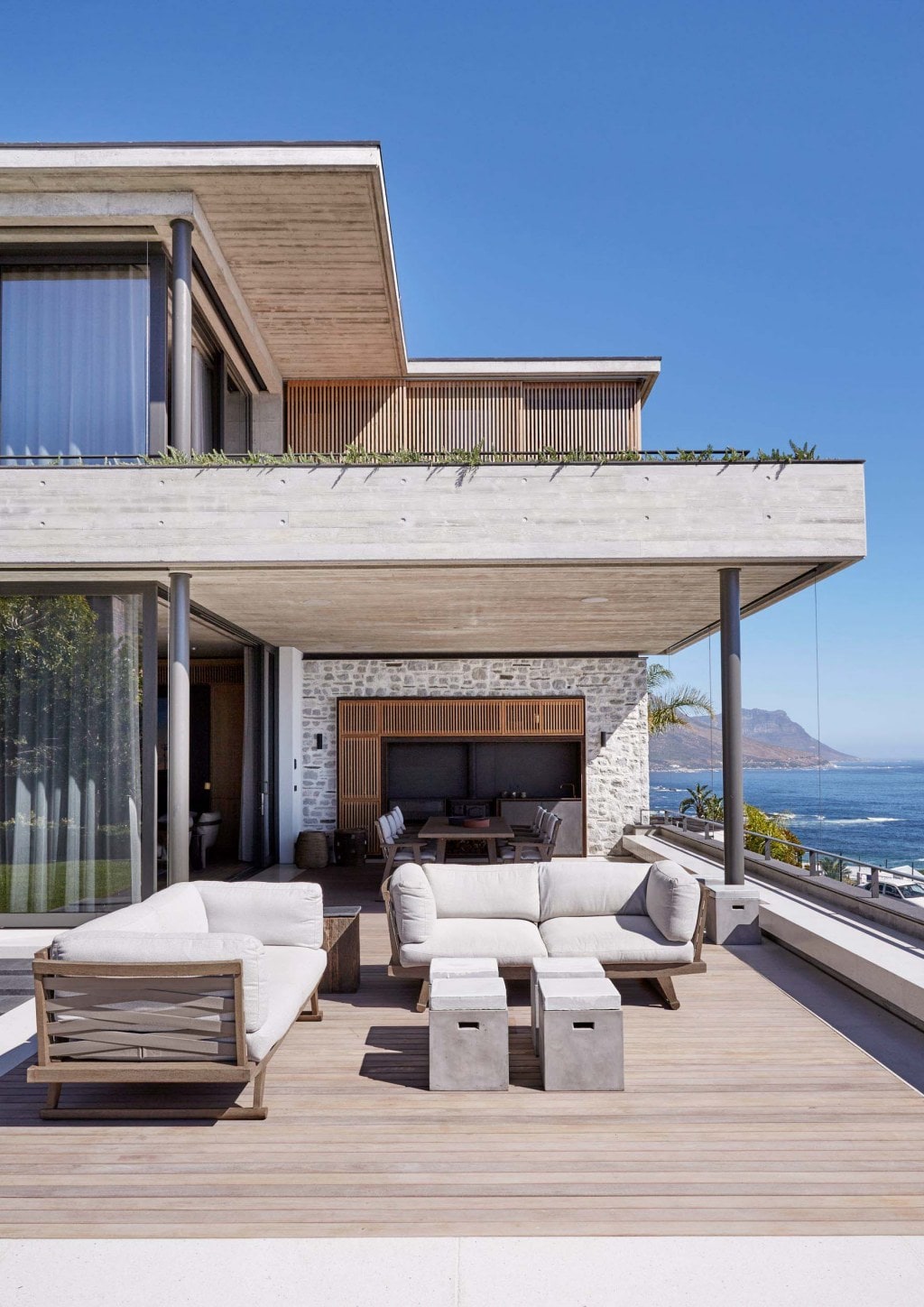
Pieter points out that on street level they used mainly natural stone – either as stone masonry walls or gabion retainers with packed stone. “The idea was that it was more of a landscaping element than an engineered built element,” he says. “With the stone and planting, it’s seen as if it is part of the mountain.” The house itself is placed on top of this rugged base, which acts as “a sort of man-made, landscaped plinth”.
“A lot has gone into bringing the landscape back to the building,” says Jan-Heyn. “It was very important that the building did not feel like an apartment block in the air.” Despite being densely built-up, the presence of nature in Clifton are central to the sense of place.
Pieter points out how, especially from street level, the house starts to “dissipate” the higher it gets.
“The massive concrete elements become thinner floating slabs that reach out into the view and into the landscape,” says Pieter. “You experience the contrast between solid and void, and internal spaces that open up completely.”
The solid elements articulate the voids: the deck and courtyard. “The cantilevering edges are planted with wild rosemary, which will creep over the edges and soften them,” he adds, so that even in the air, on the edges of the building, the planting conjures a sense of connection to the earth.
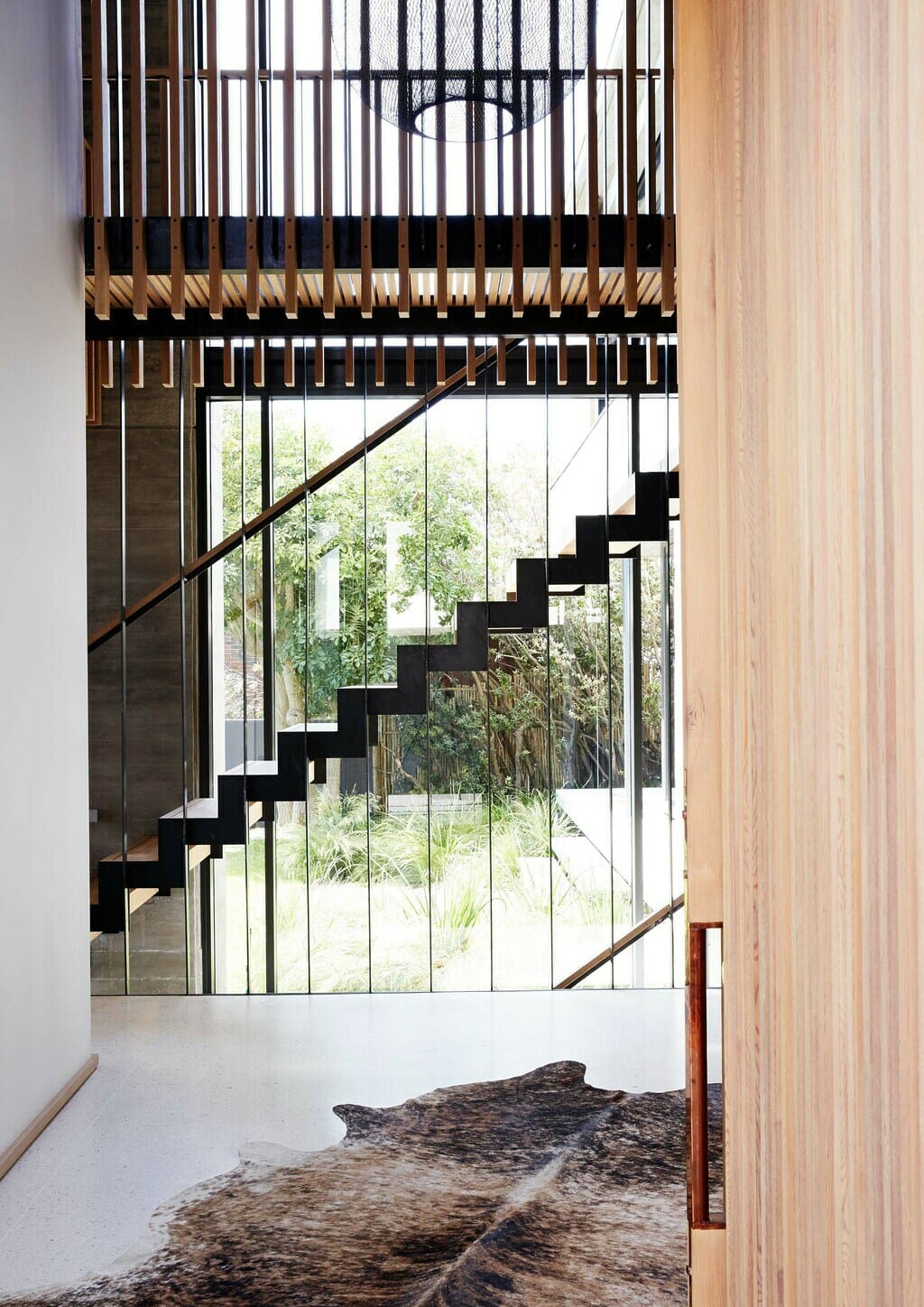
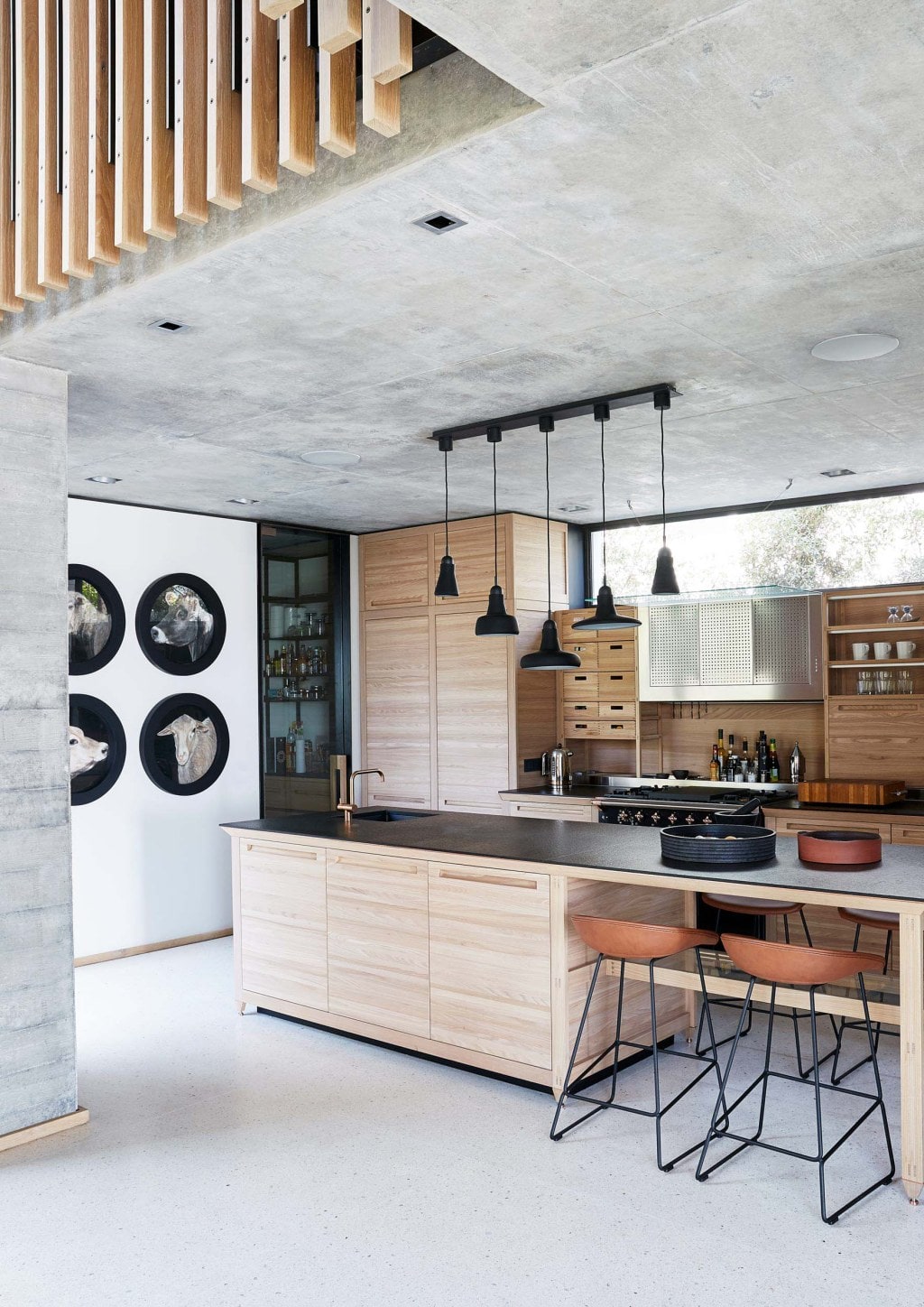
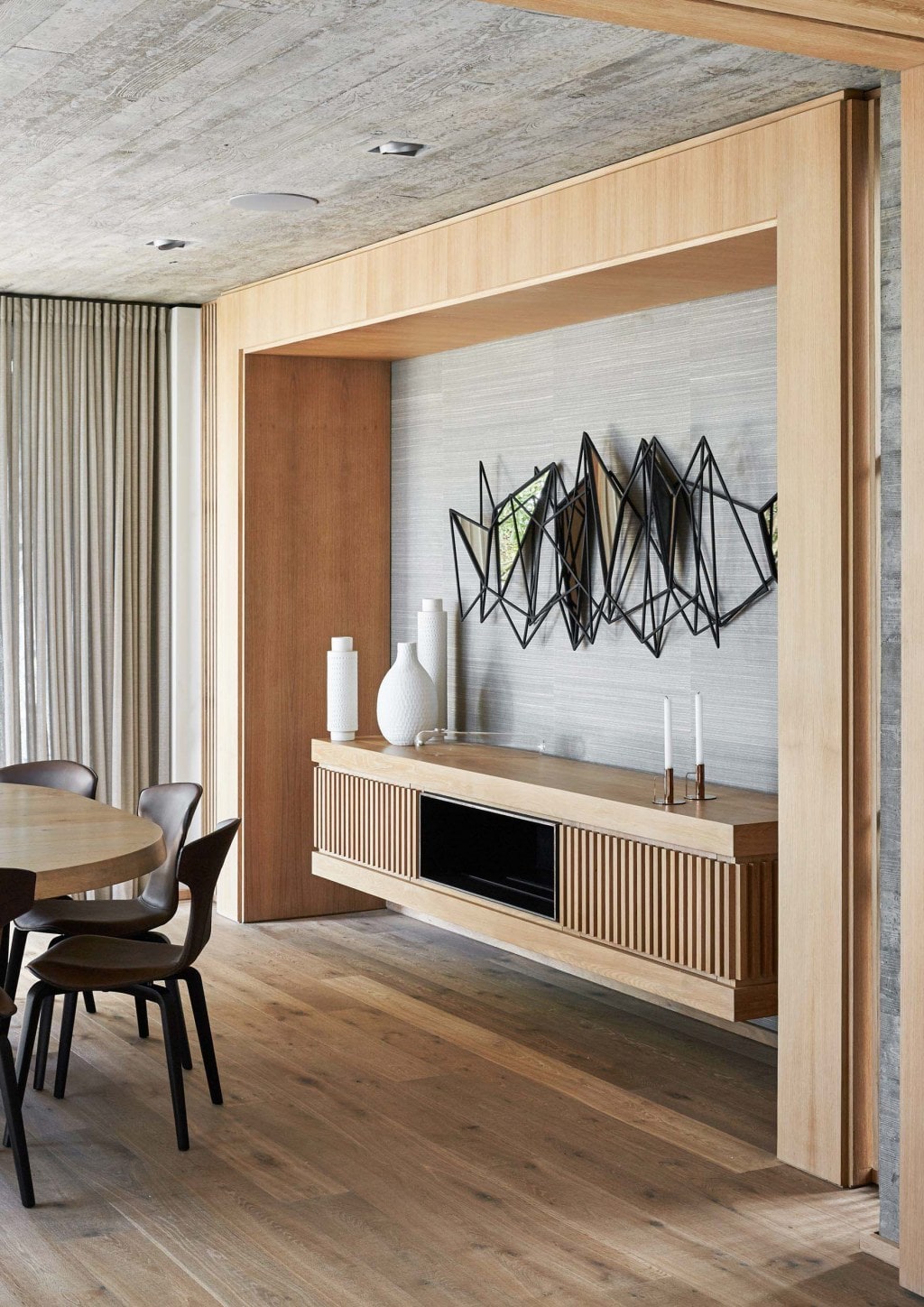
And it’s not just window-dressing: “The house is a green building,” Pieter says. “It harvests solar energy to heat all the domestic water, waterborne underfloor heating, and the pool. A photovoltaic system generates electricity for the house. Modern homes tend to be energy intensive, with the various technological systems required, so it was designed to be efficient and as self-sufficient as possible.”
Inside, the top two levels of the home are arranged around a double-volume atrium. “We tried hard to make the house a complete indoor-outdoor experience with certain areas almost becoming outdoor rooms when you open the big sliding doors and windows,” says Pieter. “So you’re always part of the garden, always part of the view no matter where you are.
“The house has an intimate quality because it is compact and contained. There are no rambling passages; spaces are all interlinked and well connected.” The lower living level includes a lounge, kitchen, dining room and guest cloak room, with an entertainment patio and pool in the front. Above the kitchen there’s a study, which could also be used as a fourth bedroom. Above the dining room there’s a separate bedroom suite and a bathroom. The master bedroom, dressing and bathroom are located above the lounge and close to the road edge to ensure the best views. All the bedrooms are connected by a transparent steel and time bridge in the double volume atrium.
While much effort has gone into making the house unassuming and accessible from the street level, it still goes up four levels. “But when you’re in the house, you’re not really aware of the garaging and guest suite below,” says Jan-Heyn. “The scale of the building becomes something completely different from its appearance from the street.”
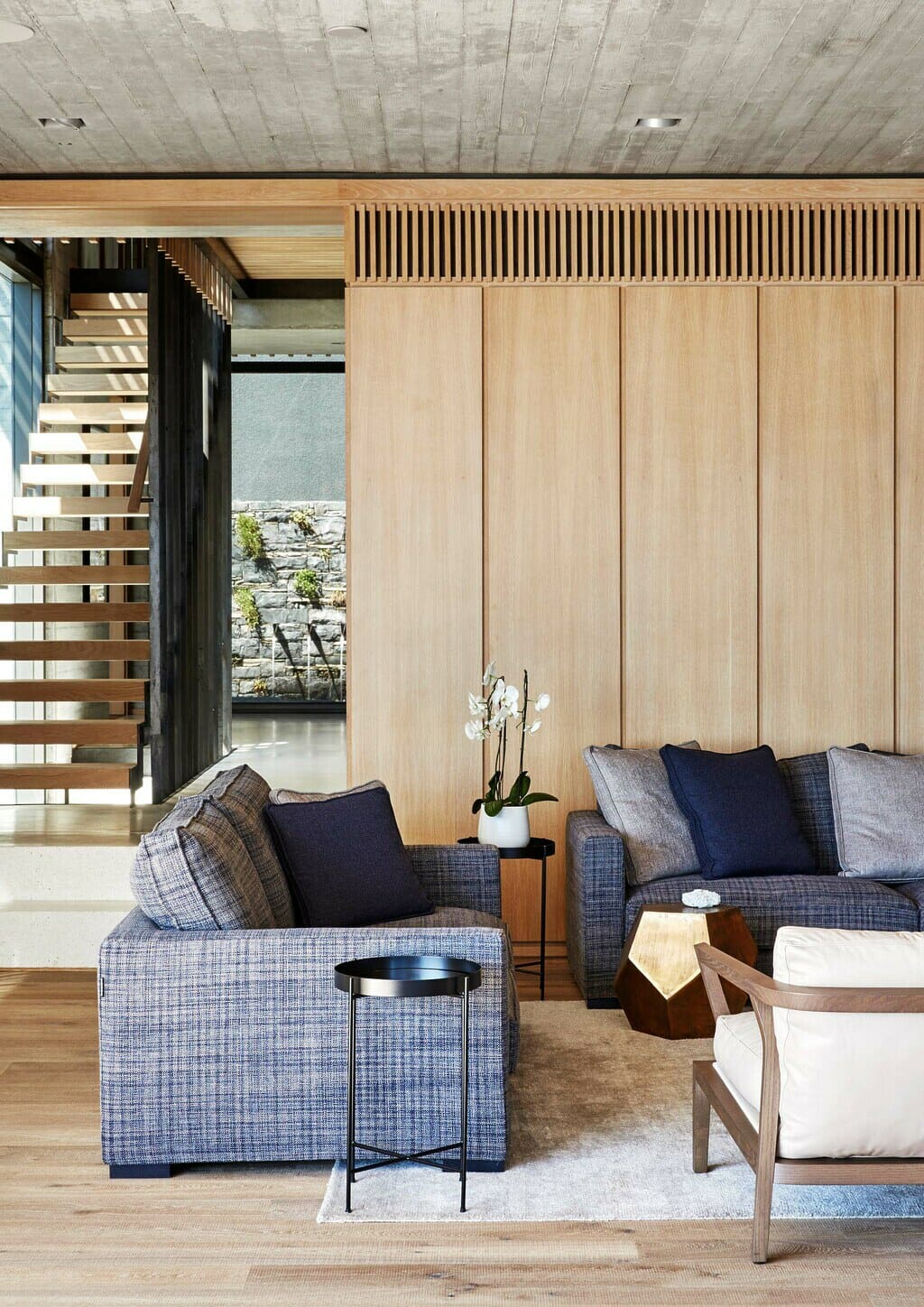
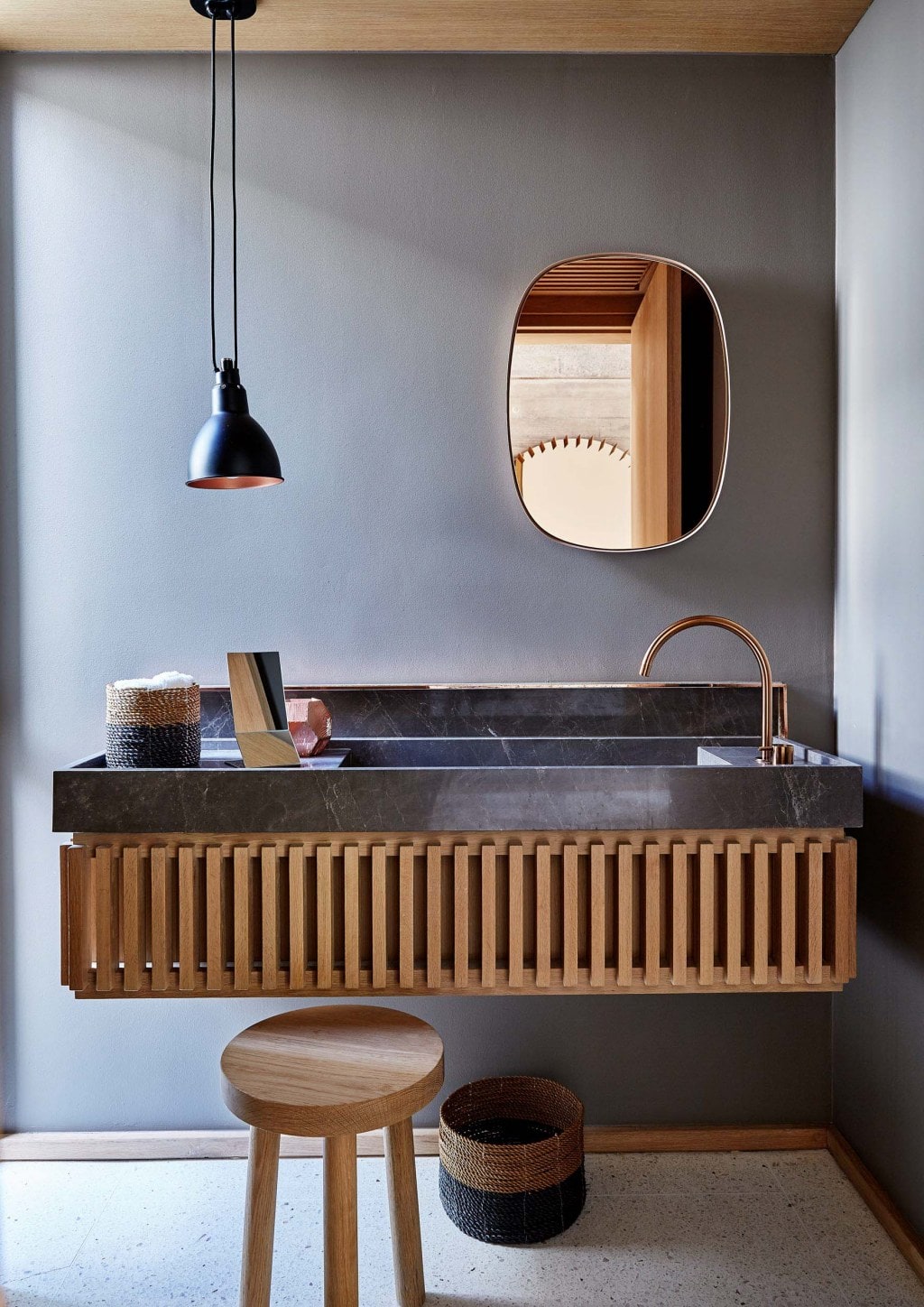
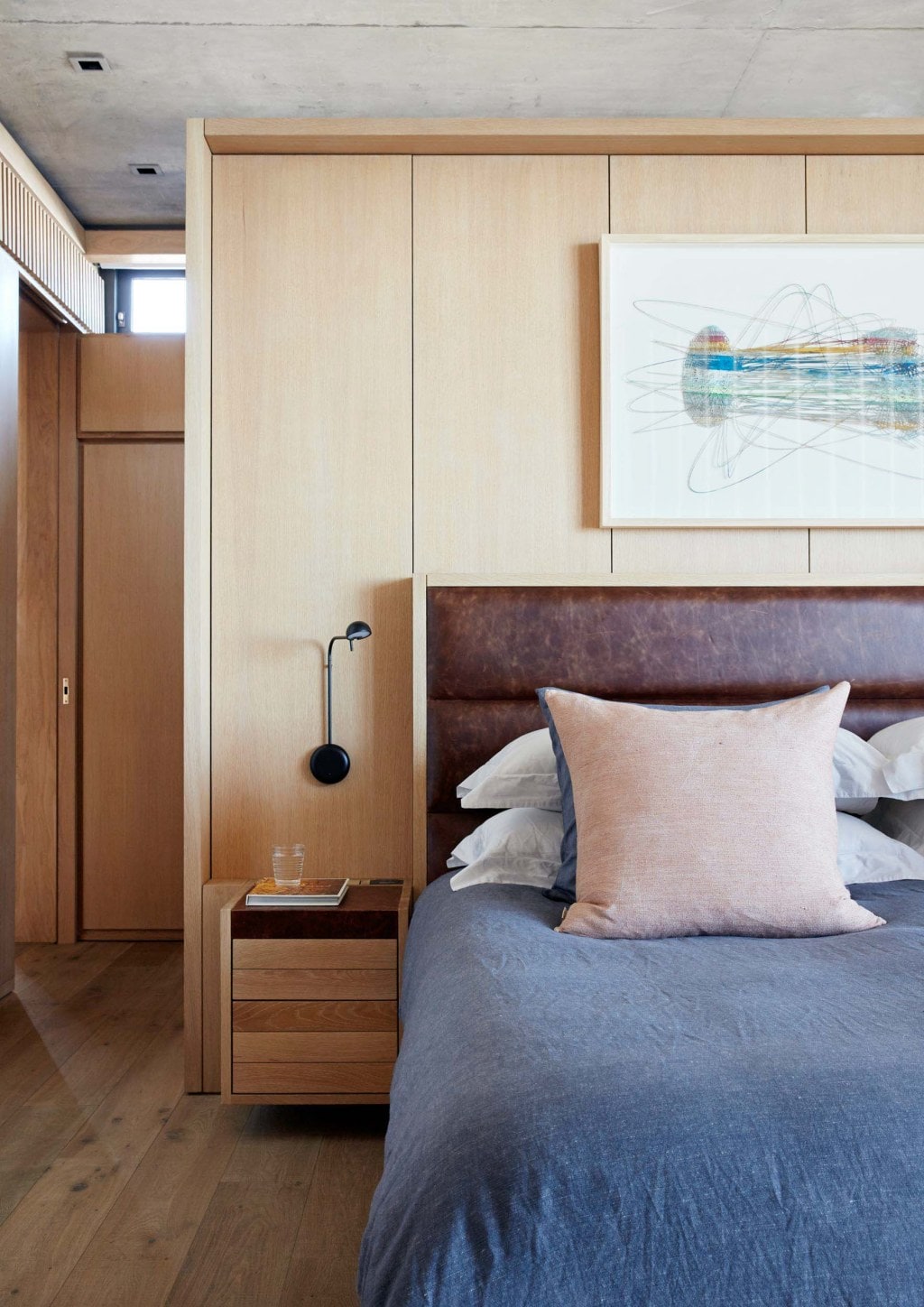
Creating a homely experience
The interiors are an exercise in restraint and awareness of the materials’ inherent textures and colours. Pieter and Jan-Heyn limited their palette to concrete, timber and stone: honest materials. There’s very little plastering and painting. It’s not always easy to create a sense of warmth and homeliness with that kind of approach. “A lot of the success of the building had to do with the comprehensive use of joinery, and the attention to detail in the kitchen and bathrooms,” says Pieter. “We aimed to create a warm, homely experience, with emphasis placed on hand crafted components and the fusing of the work of various tradespeople.”
The furnishings keep to a palette of quiet neutrals. Natural materials such as leather, wood and steel predominate, with coppery or metallic sparkles providing interest and variety and black adding definition and contrast. Blue, grey, beige and white predominate, although the defining characteristic of is the materiality of wood, concrete, glass and steel. Likewise, the natural materials of the furnishings introduce a warm, tactile quality to the house.
“The choice of materials underlines our design philosophy that finishes are to be carefully considered to create a sense of timelessness and calmness,” says Jan-Heyn. With the passing of time, as the plants grow and the stone and board-marked concrete gathers patina, he hopes the house will age gracefully and become more integrated with its natural surroundings.
This article was originally published by Bureaux and has been republished with permission.
Styling: Sven Alberding/Bureaux. Photography: Greg Cox/Bureaux

